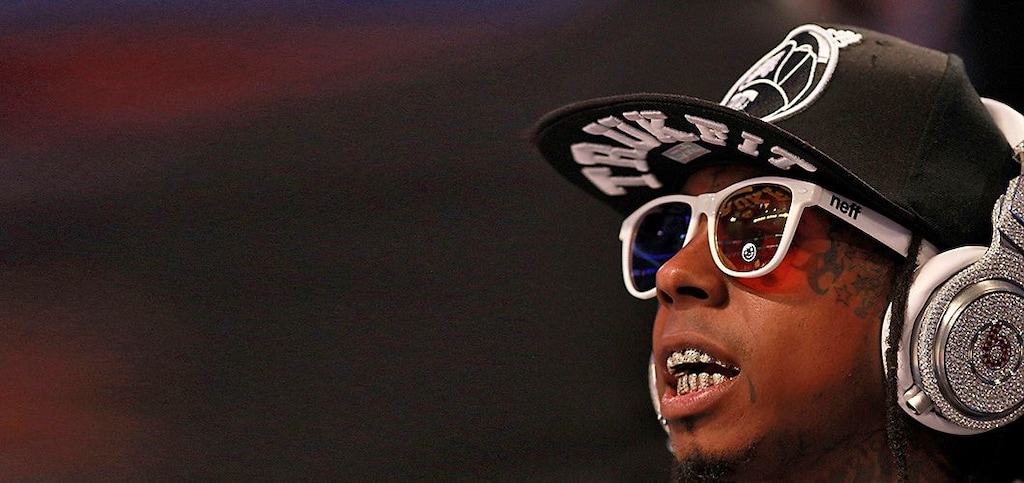Remember when headphones were just headphones? They weren’t fashionable. They weren’t a status symbol. They just existed so you could listen to your favorite songs and podcasts.
So when did it become OK for us to shell out hundreds of dollars on headphones without blinking an eye? If you take a look back, it was actually a combination of things that made headphones one of the fastest-growing categories in the consumer electronics industry today. According to retail analyst firm NPD Group, sales of headphones that cost more than $100 in the U.S. increased 73 percent since 2012. These high-end headphones now make up 43 percent of all headphone sales.
Perfect Timing
What happened in 2012 that made headphones go from listening devices to the newest must-have fashion statement? First, it was the year of the smartphone wars between the iPhone 5 and Samsung's Galaxy S3. Smartphones were smarter than ever before, and everything on it became a bit more personal—including music.
“We are spending more time on our mobile devices and a big part of that is media consumption—music, games, video,” says industry analyst Ben Arnold of NPD Group. “As mobile devices began to be used for more long form consumption, a natural transition is to pair that experience with better listening devices.”
Around this time, Sweden-based streaming music service Spotify entered the scene in the U.S. and took music streaming to a whole different level. Then, rapper Lil’ Wayne showed the world just how much headphones are actually fashion accessories by wearing diamond-encrusted Beats headphones worth $1 million.
Blending Function and Fashion
“Beats came into the market with a solution at a perfect time," Arnold says. "What was more art than science was its focus on young consumers and reliance on design. Beats headphones are equal parts listening device and fashion accessory, and I think this is really the foundation for their success.”
All of a sudden, getting a pair of Beats was a statement to the world that you’re serious about music.
In 2012 alone, Beats saw its revenue increase by 75 percent to $519 million, according to The Financial Times, and the entire industry was worth about $1.6 billion, according to a report by market research firm IBISWorld.
The success of Beats during this time came mostly from branding. According to an NPD study, brand was the top reason when choosing a product, and sound quality was second. And Beats understood exactly how to do this by attracting well-known artists to wear and promote its brand.
What's Next?
After its $3 billion acquisition from Apple, many have wondered, what's next for the headphone industry? What's left for Beats' competitors?
“I think it will force the market to innovate. For headphones, we’ll see a greater focus on design and lifestyle from Beats’ competitors. If Apple looks to tie in Beats with their wearable tech strategy, we will see competing companies try and match that shift,” Arnold says.
“If Apple is getting into the audio hardware business, I would expect companies like Google or Microsoft to be looking at similar partners, because, in essence, this acquisition helps Apple grow their ecosystem. I would expect those other ecosystem companies are noticing the importance of music and audio to their ecosystems and the ability of audio hardware to help solidify those platform offerings.”
And like all companies on top, Beats will need to expand into other territories before its competitors do. Rappers Jay Z and Ludacris both have their own lines of headphones through Skullcandy and Soul. Sony has teamed up with Simon Cowell for a new brand of headphones, and Monster has rapper Nick Cannon.
For companies still trying to find their place in the headphone industry, the IBISWorld report advises to focus on market share that hasn't yet been devoured by Beats. If Beats is claiming Apple users, perhaps Sony and Bose need to decide who’s left that they can appeal to.
Could the opportunity be moving away from branding and toward technology? The report suggests that companies in the industry look toward new technologies to see what can set their products apart from competitors, pointing out, “New headphones are continually introduced and technology plays a huge role in these new developments. However, the product’s technological changes have not been significant over the past five years and instead, headphone manufacturers differentiate their headphones on appearance, packaging and brand name rather than just the latest technology.”
Read more articles on technology.
Photo: Getty Images




